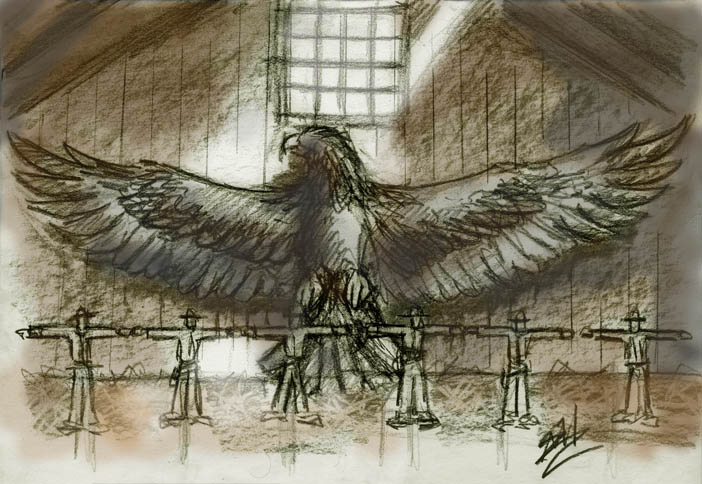Living Cryptids: Thunderbird
This week, we discuss the creature known as the Thunderbird. This avian species is speculated to be the largest of all bird, and the most deadly among birds-of-prey. The most prevalent support for such creatures is found among the totem poles of Native Americans. It is believed that some Native Americans are descendants of these thunderbirds. Unlike some of the other creatures that have been explored on this blog, there are no “pictures” of the Thunderbird so evidence is extremely limited.
The Thunderbird has origins both in the Old World and New World. In the Old World, they were called rocs. There is no evidence of creatures actually living at the time but the famous story of Sinbad tells the story of him encountering one on his travels. New World origins are attributed to Native Americans, specifically, in the northwest. The size of these creatures varies from 14 foot wingspan to the size of small towns. It gets its name from the sound produced when it flaps its wings, a loud, crashing noise that echoes through the sky.
For the purpose of this post, we’ll adopt a conservative wingspan of 20 feet. This puts the creature at a considerable size. Its eggs would probably be the size of a backpack. If it were to be this big, it could easily pick up cattle and have them be their main source of diet, due to the fact that cattle are never in short supply. This is what could have allowed it to continue to live on. It may also have similar hunting techniques seen with eagles today. It uses its talons to pierce the body of the prey and then wraps its other talons around to hold it. This would allow for it to hunt for both land and sea animals. Its features are most likely very similar to that of an eagle or hawk.
Either way, this is big bird.


Leave a Reply
You must be logged in to post a comment.